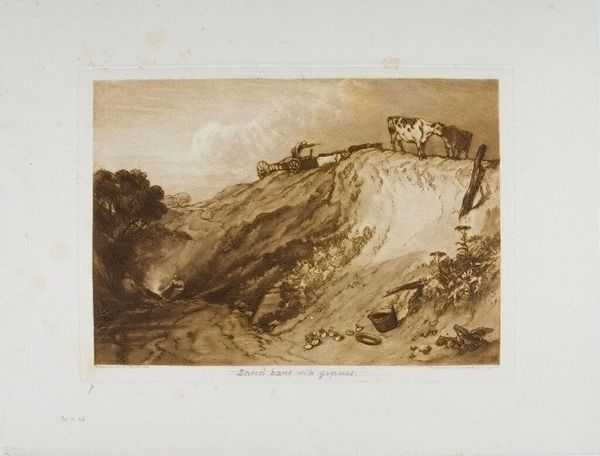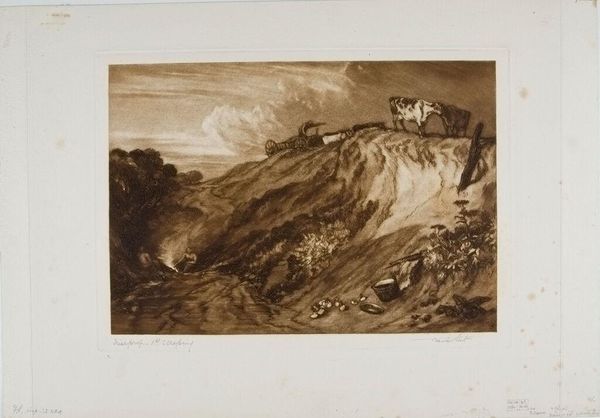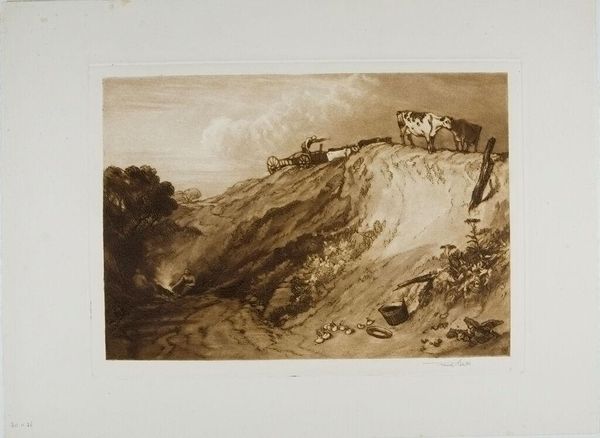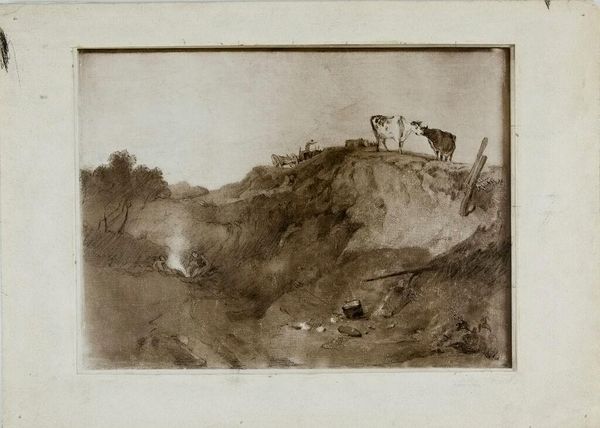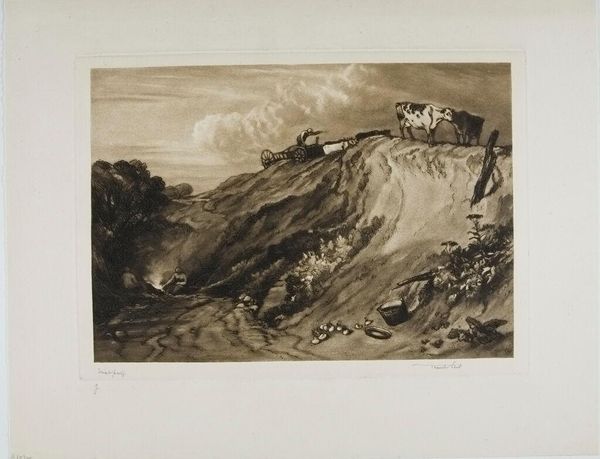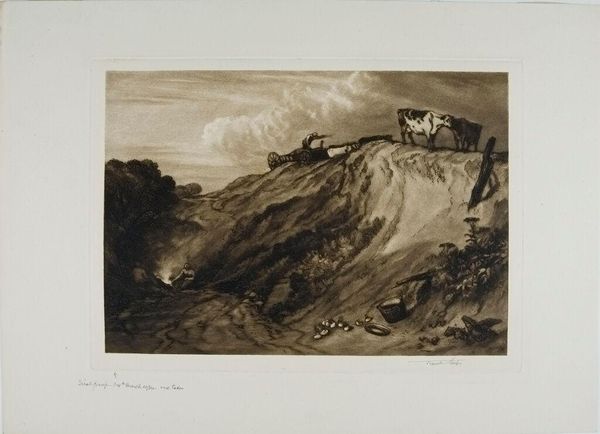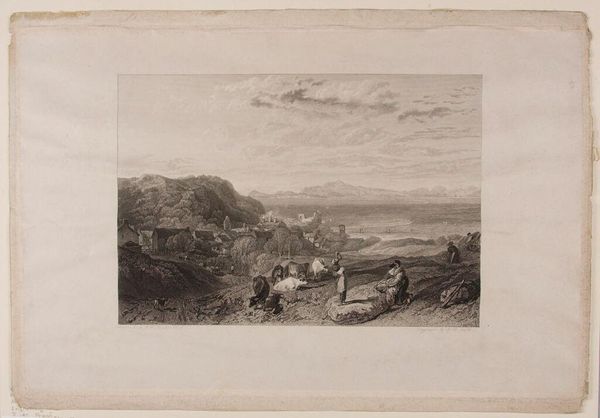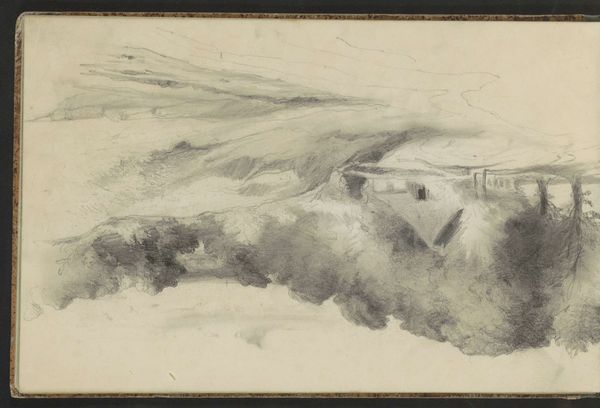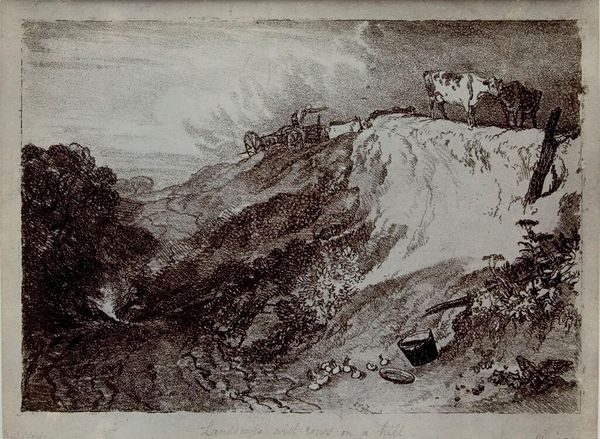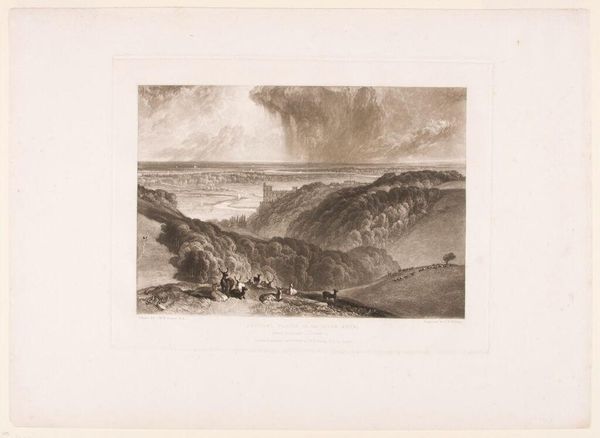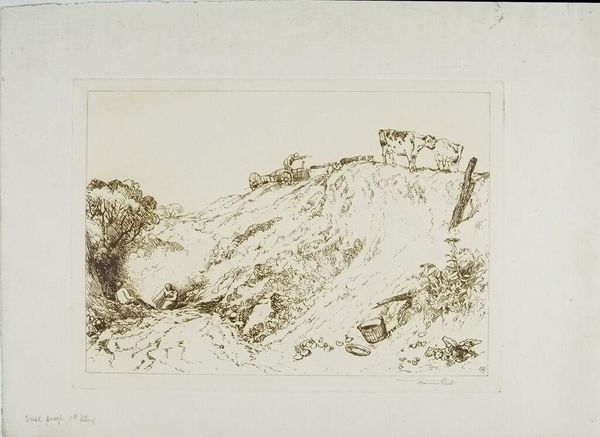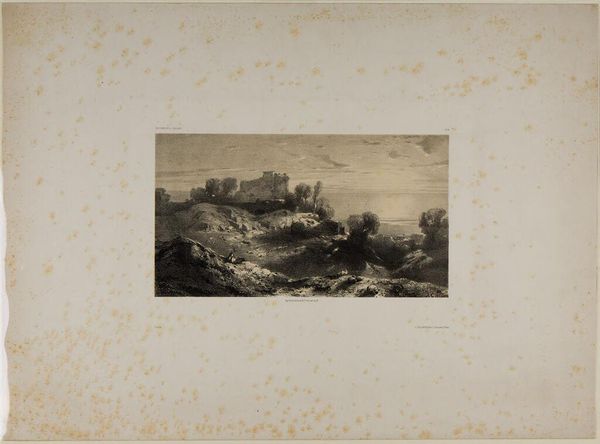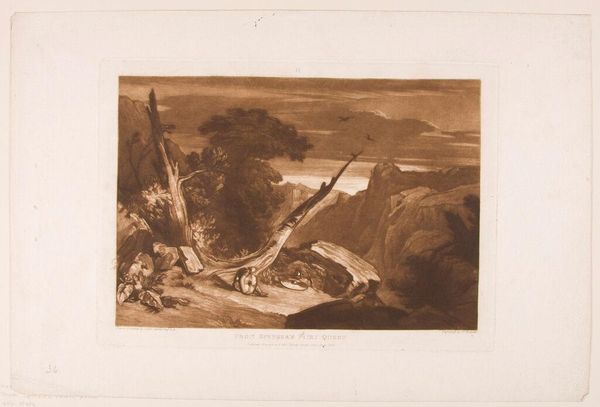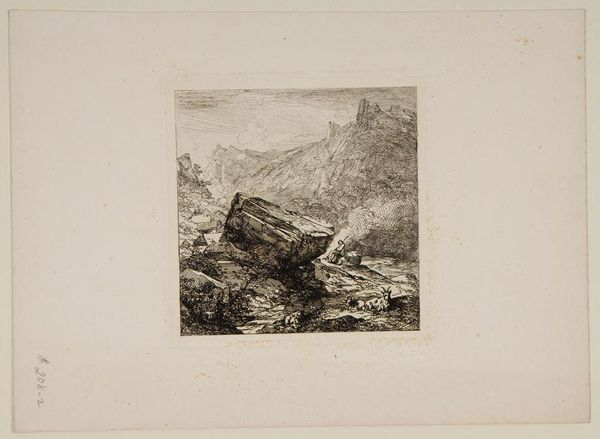
Copyright: CC0 1.0
Curator: Frank Short's "Sandbank with Gipsies" presents a compelling scene. The sepia tones create an immediate impression of warmth and perhaps a slightly melancholic, rustic atmosphere. Editor: It's interesting how Short, born in 1857 and passing in 1945, depicts this encampment. How does the romanticized vision of "gipsies" connect to the realities and social stigmas they faced? Was it intended for public consumption, or was it a private study? Curator: We see the labor of the gipsies depicted directly; they work the sandbank, seemingly transporting material, maybe for sale or other trade. It hints at their integration, however marginal, into the broader economy of the time. Editor: Precisely. The sandbank, in that context, is not merely a natural feature. It becomes a site of work, of economic exchange, of a specific marginalized community trying to survive within a particular socio-economic system. It reflects the power dynamics at play. Curator: The fire in the lower left suggests a domestic scene; the mundane aspect of life, rendered with a certain dignity through the artist’s hand. Editor: It’s crucial to acknowledge how the gaze of the artist, the societal position of the gallery, shapes the meaning we derive from the artwork today. What social narrative is being woven here? Curator: Absolutely. Ultimately, it's a glimpse into a moment mediated through layers of history, labor and perspective. Editor: Indeed, a reminder that even ostensibly simple scenes are complex intersections of class, work, and societal views.
Comments
No comments
Be the first to comment and join the conversation on the ultimate creative platform.
